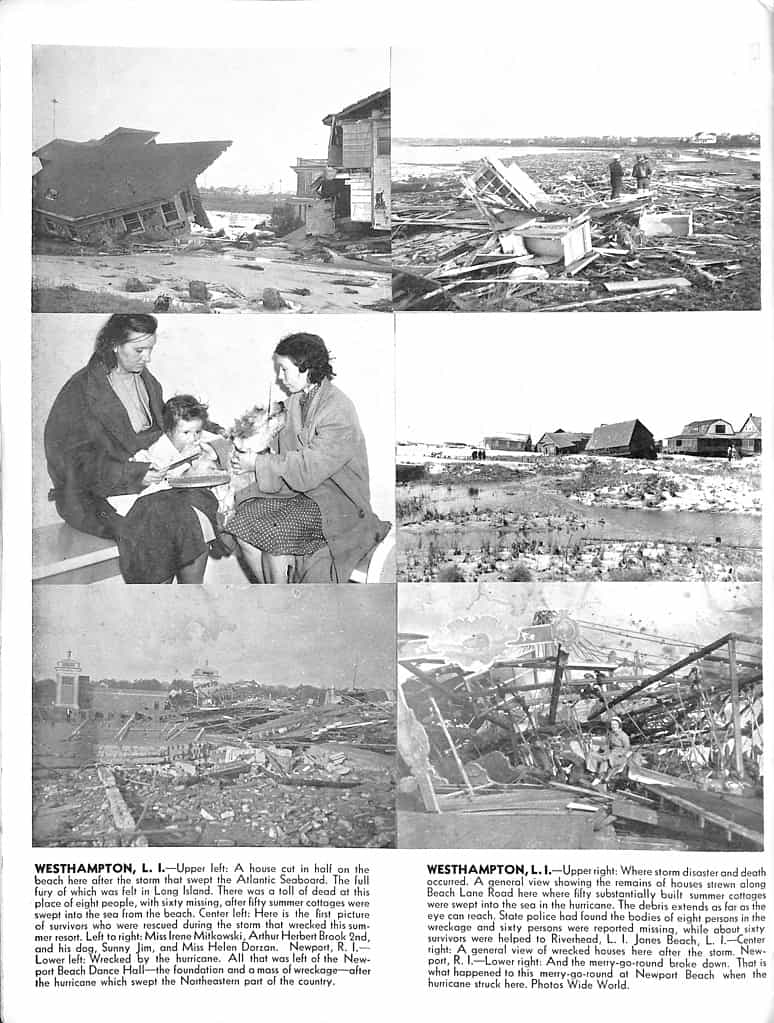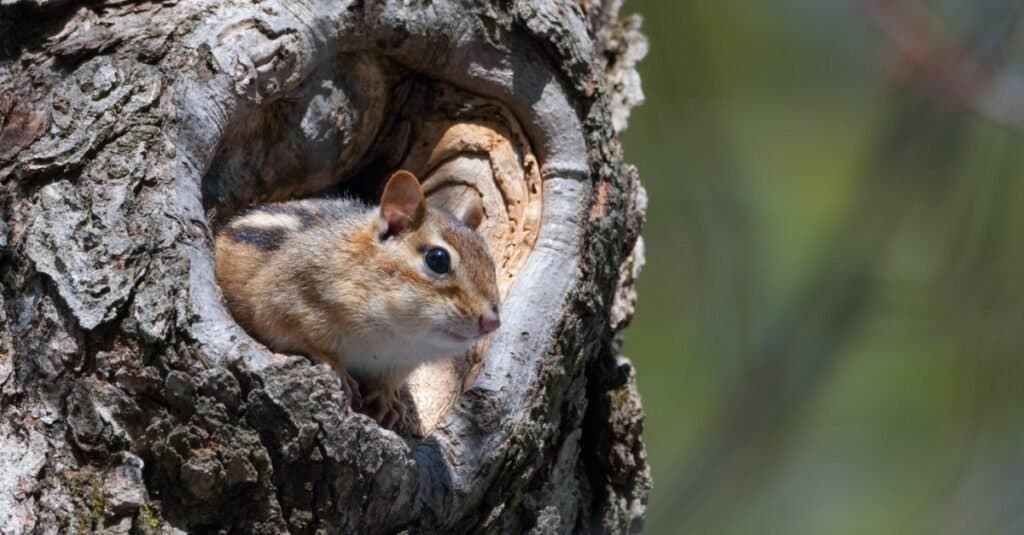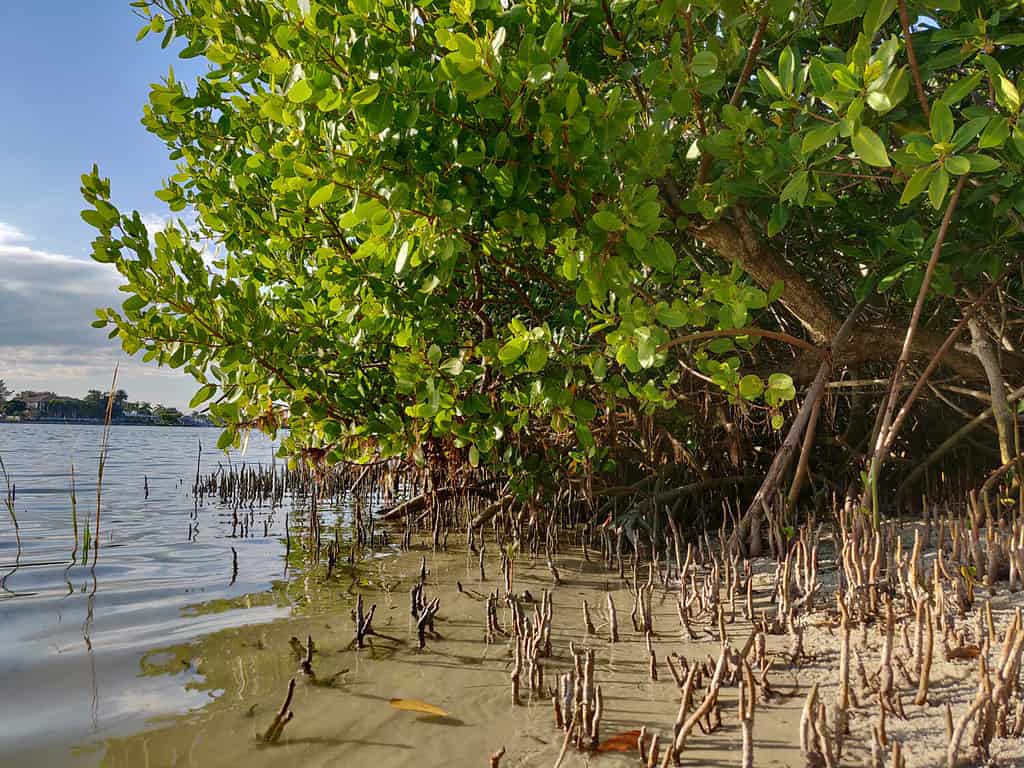On a quiet September day in 1938, a ferocious Category 5 hurricane was quietly brewing off the coast of Africa. This was no ordinary storm. It was one that would go down in history as one of the most potent and destructive hurricanes ever recorded. The Long Island Express, also known as the 1938 New England Hurricane, the Great New England Hurricane, and the Yankee Clipper, embarked on a journey across the Atlantic Ocean. It would cause the tragic loss of human lives and the devastation of entire neighborhoods. Further, it would have a lasting impact on the diverse ecosystem of New York.

©
New York’s Unforeseen Hurricane
Beneath the watch of the United States Weather Bureau, now the National Weather Service, the hurricane stealthily grew in might. Hindered by rudimentary forecasting equipment and methods of the era, the hurricane evaded early detection. Its full force wasn’t recognized until September 16, creating a vital lag in response and readiness. This powerful tempest made landfall just five days later. It revealed a preparedness system incapable of dealing with such a storm. This included both our ability to estimate the storm’s strength and to alert an unsuspecting public.
The Hurricane Unleashes its Fury on New York
The Long Island Express, or 1938 New England Hurricane, struck with tremendous power. With sustained winds reaching up to 160 mph (260 km/h), it left a trail of destruction as it stormed into Long Island as a Category 3 hurricane. With storm surges of up to 50 feet, the impact of the hurricane slamming into Long Island registered on seismographs in Alaska. The storm erased nearly 57,000 homes from existence. The estimated property loss added up to about $306 million — a staggering $8.7 billion in today’s dollars. This damage cost figure, while only a rough estimate, gives us a picture of the hurricane’s immense destructive power. The visible damage was only the beginning. The deeper and longer-lasting impacts reached far beyond humans to the environment and wildlife of the region.
Long-Term Impacts of the Great Hurricane
People Who Were Already Suffering Suffered Even More
The 1938 New England Hurricane had a profound impact on both humans and the diverse wildlife of New York. It inflicted both significant short-term and long-term damage. For humans, the storm resulted in a severe loss of life. About 682 to 800 deaths can directly be attributed to the event. The hurricane led to extensive property damage, wrecked infrastructure such as roads, bridges, and buildings, and disrupted power and clean water supplies for days or even weeks. The economic burden was colossal, with damage costs running into hundreds of millions of dollars. And we should also bear in mind that this occurred in the thick of the Great Depression and just three years before the United States entered World War II.

©
Wildlife and the Storm
Before the storm, the region was home to a wide array of wildlife. The NYC Parks website lists various species of mammals, birds, reptiles, amphibians, and aquatic wildlife that call New York City home. Species such as bats, coyotes, eastern chipmunks, squirrels, raccoons, red foxes, seals, skunks, opossums, white-tailed deer, and a multitude of birds, reptiles, amphibians, and aquatic wildlife flourished in the area.
The hurricane’s arrival was cataclysmic for these creatures. The immediate deaths from intense winds and flooding were just the beginning of a much more significant problem. The storm surge and high winds led to the widespread destruction of habitats such as forests, wetlands, and coastal areas. This resulted in a shift in population dynamics, disrupted food chains, altered migration patterns, and caused many animals to lose their homes or lives.
Animals like the burrowing eastern chipmunks and various species of owls sought shelter from the storm by digging down or flying away. Scavengers like raccoons adapted by finding new sources of food during and after storm. Marine animals such as seals, American eels, and horseshoe crabs faced unique challenges and often had to navigate to calmer waters to avoid the direct impact of the hurricane. However, despite the hardships, some wildlife, including scavengers and amphibians, managed to thrive in the post-hurricane environment. Others struggled to survive.
Even in the aftermath of destruction, wildlife showed a blend of resilience, adaptation, and vulnerability. However, habitat destruction disrupted ecosystems and caused potentially permanent changes in local wildlife populations. Post-hurricane, the environment was altered, with standing water, downed trees, and depleted food supplies. Moreover, such a drastically changed world possibly favored the growth of invasive species.

Weighing up to around five ounces, the Eastern
chipmunk
is the largest of its kind. Even so, it’s hard to imagine how such creatures survive hurricanes.
©iStock.com/Kyle Bedell
Investing in Natural Infrastructure
Given these challenges, it’s crucial to consider wildlife impacts in disaster response and planning. Immediate actions like securing objects and long-term investments like natural storm buffers such as mangroves (something New York has recently started cultivating) and wetlands can help minimize the impact of storms on wildlife and their habitats. Doing so would also alleviate the impacts of flooding, the most long-lasting impact of hurricanes on property and infrastructure. Moreover, further expanding existing programs that aid and rescue both companion and wild animals affected by natural disasters can make a significant difference. Doing so should be part of comprehensive disaster relief efforts.
The 1938 New England Hurricane clearly dealt a significant blow to human and wildlife populations. The resilience and adaptability of many species allowed for a gradual recovery, even if the ecosystems may have sustained permanent alterations.

Mangrove trees grow in the coastal intertidal zone and often found throughout Florida. Many places, including New York, are considering cultivating mangrove forests as a defense against strong storms like hurricanes.
©Daniel Carlson/Shutterstock.com
The Storm After the Storm: Critical Evaluation and Lessons Learned from New York Hurricane
The Long Island Express ignited an intense debate about the weather forecasting methodologies of the time. It shed a spotlight on the urgent need for accurate, timely hurricane prediction and response mechanisms. The unseen benefit of this devastating hurricane was the subsequent advances in meteorological science, which improved our ability to forecast such events and strategize disaster management.
The United States Weather Bureau, now called the National Weather Service, faced heavy criticism for its inability to accurately predict the hurricane’s trajectory. Forecasters in Jacksonville, Florida, had correctly predicted the storm’s northward path. Unfortunately, they saw their warnings ignored by the bureau in Washington, DC. The inability to foresee a hurricane retaining such intensity this far north led to erroneous predictions. Part wishful thinking and part willful ignorance, the DC bureau incorrectly assumed that the storm would veer harmlessly out to sea.
The Criticism Led to Several Lessons Being Learned
1. Improved Forecasting
The hurricane that hit New York and the surrounding area served as a wake-up call to the dire need for refined weather forecasting techniques. Following this event, meteorology saw significant advances, including the advent of weather radar and satellites.
2. Better Communication
The event underscored the critical role of effective communication in disseminating weather warnings. The Weather Bureau adapted by using radio broadcasts to deliver timely weather warnings. These warnings would later include emergency television broadcasts — hence the famous “This is a test of the emergency broadcast alert system.”
3. Infrastructure Improvements
The aftermath of the hurricane saw a recalibration of building codes and infrastructure design to better withstand future hurricanes. One notable example of this was the construction of the Fox Point Hurricane Barrier in Providence, Rhode Island, designed specifically to protect the city from storm surges. Similar design and engineering considerations against natural disaster have gone into newer buildings located in earthquake prone areas.
4. Emergency Preparedness
The event heightened the importance of comprehensive emergency preparedness. Affected communities rallied to develop emergency plans to improve their response to future hurricanes. Residents made do with local and regional emergency plans when faced with natural disasters. It was until 1971 that President Jimmy Carter established the Federal Emergency Management Agency (FEMA), an agency capable of effectively coordinating across regions.
Conclusion
As we approach its 85th anniversary, the 1938 New England Hurricane, with the clarity of hindsight, was a critical turning point in the history of New York. Its unrivaled strength and sweeping devastation not only physically reshaped the landscape but also sparked a transformation in our understanding of hurricanes, our readiness to respond, and our resilience in the face of adversity. The storm’s echoes can still be heard today. And as a warming climate presages more hurricane-level storms, it’s a poignant reminder of the power of nature and our unending dance with the unpredictability of the world we inhabit.
The photo featured at the top of this post is © Trong Nguyen/Shutterstock.com
Thank you for reading! Have some feedback for us? Contact the AZ Animals editorial team.







